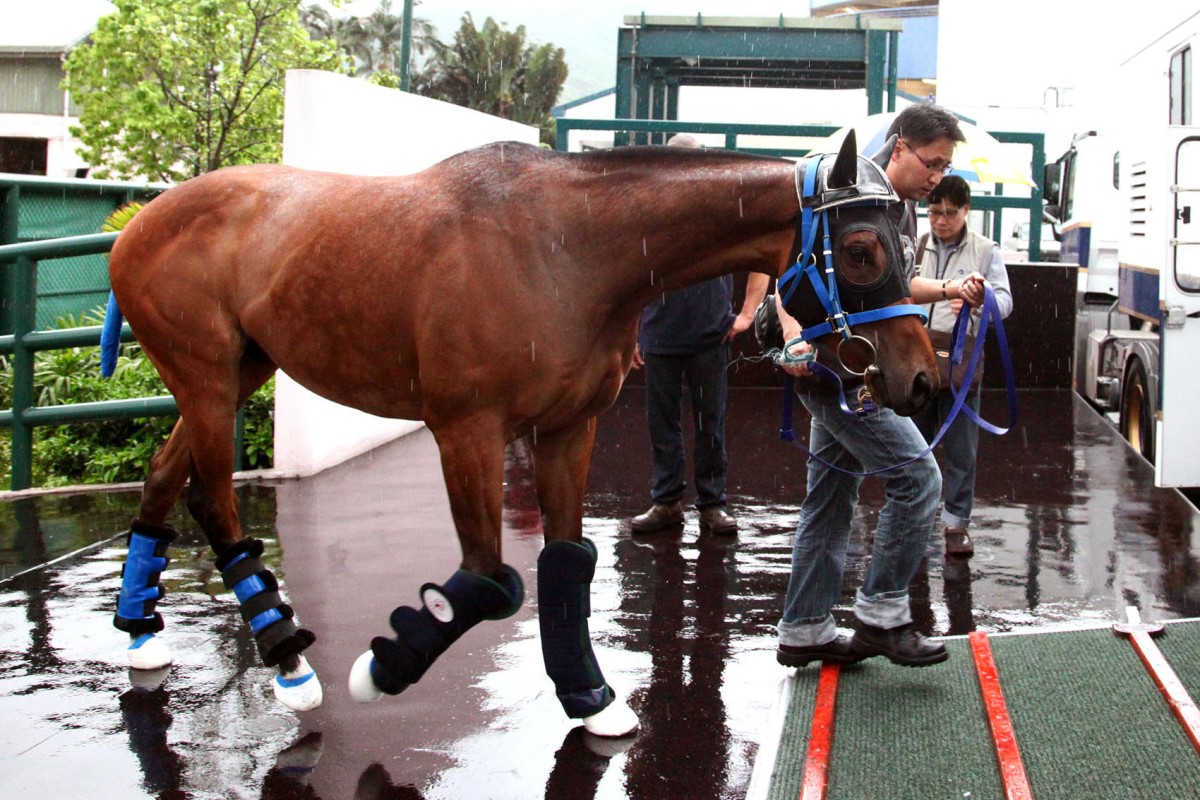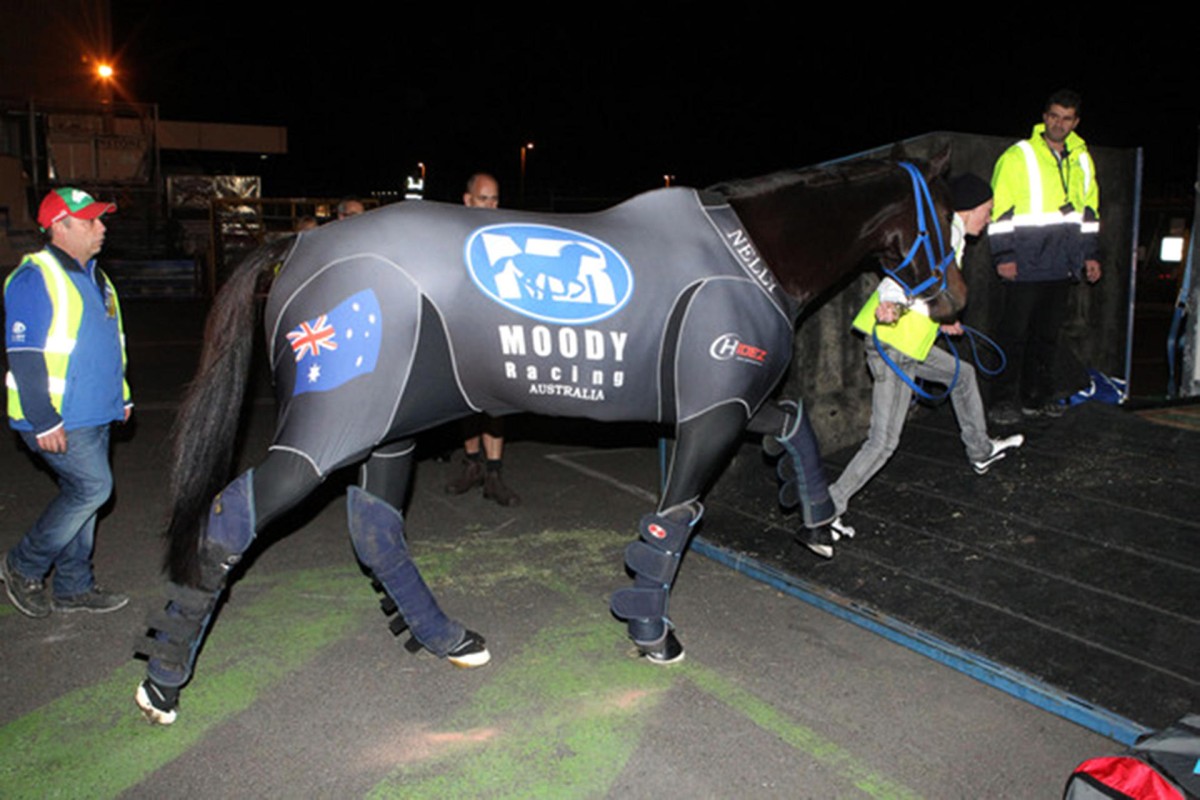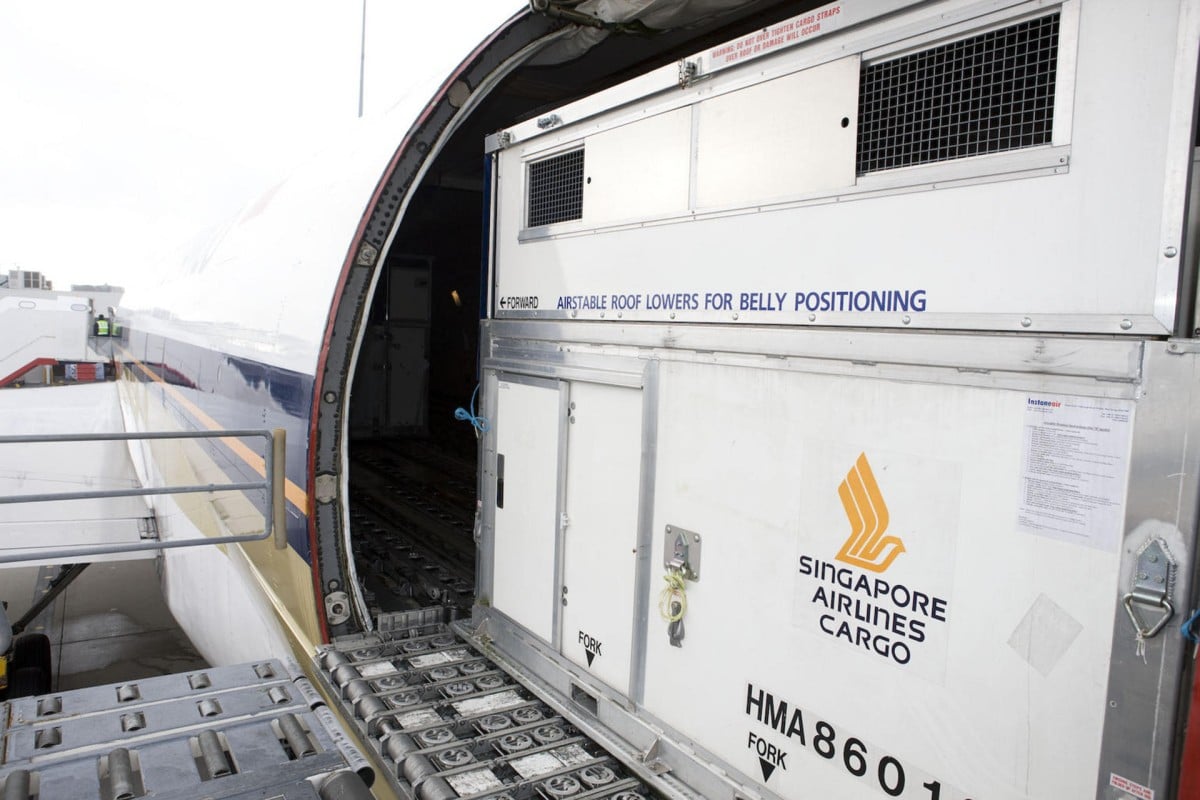Lucky Nine has flown overseas so often Caspar Fownes reckons his star sprinter comes to life when his custom-made "horse helmet" is fitted before boarding - "his ears prick up and he looks around all excited, like, 'where are you taking me now buddy?'" Fownes laughs.
So when things didn't quite go to plan last week and Lucky Nine was forced to wait five hours on the tarmac at Chek Lap Kok before taking off, the horse Fownes calls "a dude" didn't bat an eyelid.
Sending a racehorse overseas isn't quite as simple as calling a courier, putting a highly strung 500kg beast in a box and shipping him off, but airfreight of thoroughbreds has become so commonplace it is a relatively streamlined, efficient and pain-free process.

When Lucky Nine flew to Singapore for today's KrisFlyer International Sprint at Kranji racecourse it was the 14th time he had boarded a plane and his eighth trip to a foreign land, including the initial journey from his birthplace of Ireland to Fownes' Sha Tin stables.
Lucky Nine is just one example of today's elite racehorse - they seem to log as many frequent-flier miles as they do laps of the training track.
It is the second time the seven-year-old has travelled to Singapore, having won last year's KrisFlyer.
It is a relatively simple flight on most occasions, but two Fridays ago a yellow rain storm warning forced the long delay.
"We just made sure we kept the water up to him, gave him some fresh grass and some carrots," Fownes said.
The rather homely TLC of freshly cut grass and carrots is a simple touch, but there are a lot more pre- and post-flight procedures to ensure horses like Lucky Nine arrive safe and sound.

Two hours before departing for Chek Lap Kok, Lucky Nine had already undergone much of the preparation required for his flight.
An electrolyte drip had been delivered to ward off dehydration and during the flight he was encouraged to drink as much water as possible - between 20 and 40 litres on longer flights is common.
It is normal for a horse to lose 10 to 15kg during a flight and managing fluid levels can reduce the weight loss.
But the biggest threat is "travel sickness", which is basically a form of pneumonia or fluid on the lungs.
Travel sickness often occurs when a horse stands with his head up for long periods of time, losing their only mechanism to drain mucus - dropping their head.
In a confined space like a plane, with animal dropping particles in the air along with dust from feed, the chances of bacterial infection are higher.
Travel sickness shows itself with symptoms of fever, depression, lethargy and lack of appetite and can be fatal if not recognised and treated early.
Knowing the risk factors has led to preventative measures like watering hay to keep dust particles to a minimum, and in-flight measures like getting horses to lower their heads regularly.
But the biggest factor in preventing travel sickness is not allowing an already sick horse to travel, says Hong Kong Jockey Club vet Michael Hurley.
"We are more aware of not putting sick horses on the plane. You want to travel a fit and healthy horse, so taking temperatures regularly and blood tests help," Hurley said.
"Because, once they are on the plane there is very little you can do."
Many horses have their shoes removed, but Lucky Nine's hoof problems mean his feet are instead wrapped in tape to stop him from pulling a shoe off in the air, and his tail is wrapped to stop it becoming tangled.
Once Lucky Nine's helmet was on, a Jockey Club horse transporter took him to his date with a Singapore Airlines 747 freighter.
International Racehorse Transport (IRT) is entrusted with getting Lucky Nine on and off the plane.
IRT began flying horses 42 years ago, at a time when a fully chartered aircraft was required to move a horse and was a relatively rare occurrence.
It is now possible to send a horse anywhere in the world within 24 to 36 hours and it is much safer than it was four decades ago, when loading a horse required a perilous walk up a nearly two-storey high ramp, and back off again on arrival.
What has revolutionised horse transport is the containers they are shipped in - three metres long, by nearly 2.5m wide, by 2.5m high, stainless steel stalls that can carry three horses. They can be simply lifted by forklift into the upper cargo hull.
IRT was responsible for the most famous horse journey since Australian champion Phar Lap was hauled on to a ship in an ungainly fashion for his ill-fated trip to the Americas in the 1930s.
When Australia's unbeaten sprinter Black Caviar was flown to England in 2012 to compete at Royal Ascot her journey attracted unprecedented media interest.
Black Caviar wore a specially designed compression suit aimed at increasing blood flow during the 30-hour trip and it turned out she was a trendsetter as the suit is now commonly used.
IRT's Australian director Lachlan Ford says that once horses are loaded into the plane there are rarely any dramas. "We move 7,000 to 8,000 horses per year and we probably only sedate 2 per cent," he said. "They do stand up most of the time anyway so standing on the plane comes naturally to them. A groom is with them the whole time, other than take-off and landing."
Even though Black Caviar had the relative luxury of a three-horse stall to herself for her famous flight, most horses prefer company and a nervous first-time flier can be helped to stay calm if put near a calm veteran like Lucky Nine.
On arrival at Changi airport Lucky Nine was examined by a government vet, to again ensure he is the right horse before health checks take place. Singapore Jockey Club vet Koos van den Berg put Lucky Nine through another round of preventative checks. Van den Berg said that, quarantine restrictions aside, flying horses had become so streamlined it had become more and more like flying humans.
"They even have a passport and it's got all of their travelling history," he said.
So win, lose or draw tonight, Lucky Nine will do it all again and return home to Hong Kong. And it probably won't be long before he is getting another stamp in his passport.

















